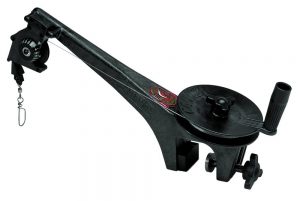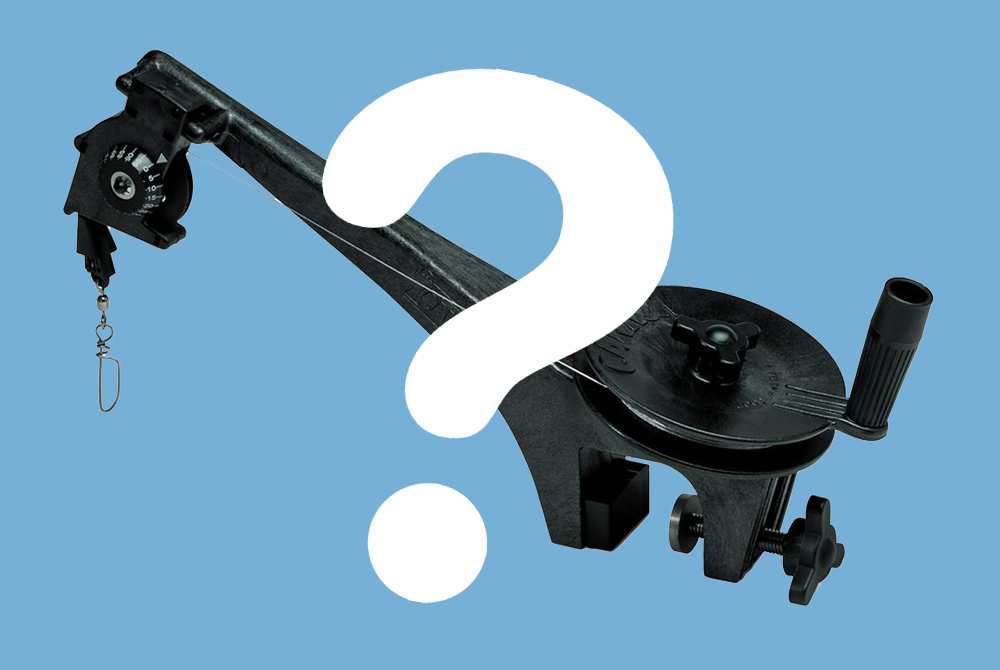How to Install a Downrigger on Pontoon
Fishing is one of the main activities pontoon enthusiasts get to indulge into. Whether it’s trout, bass or kokanee salmon, these fish are known to be quite intelligent – it might also be due to many pontoon boaters going for them in the last couple of years. That’s why you need to be prepared for waiting patiently for fish to bite on that shiny bait. Holding the rod just won’t do the trick – It would mean several hours of waiting for that slight pull of the line to know when a fish has been caught. That’s why a fishing enthusiast with a pontoon boat needs a downrigger – a crane-like device which can be installed on your pontoon boat and will hold the fishing line at the correct depth for you.
 If you’re into fishing, you might be pretty familiar with what a downrigger is. But just in case you’re a newbie or someone who clicked on this out of pure interest, a downrigger is a miniature crane that uses some kind of weight – a heavy 6- to 12-pound ball to keep your fishing line anchored to a certain depth. When choosing a downrigger, you might want to consider a couple of personal preferences – how often are you out on the water, what kind of depth are you aiming to achieve with your downrigger, and last but not least, the budget you have. Downriggers are divided into two main categories – manual and automatic, with the automatic one being much more expensive than the manual ones. When it comes to the installation process, there isn’t really much of a difference between an automatic and a manual downrigger, so that should be a criterion for your choice.
If you’re into fishing, you might be pretty familiar with what a downrigger is. But just in case you’re a newbie or someone who clicked on this out of pure interest, a downrigger is a miniature crane that uses some kind of weight – a heavy 6- to 12-pound ball to keep your fishing line anchored to a certain depth. When choosing a downrigger, you might want to consider a couple of personal preferences – how often are you out on the water, what kind of depth are you aiming to achieve with your downrigger, and last but not least, the budget you have. Downriggers are divided into two main categories – manual and automatic, with the automatic one being much more expensive than the manual ones. When it comes to the installation process, there isn’t really much of a difference between an automatic and a manual downrigger, so that should be a criterion for your choice.
Technically, choose a manual downrigger if:
- You plan to use it in waters no deeper than 25”.
- You’re looking for a lighter alternative that won’t put too much weight on your pontoon.
- You‘re not bothered by the idea of having to crank the handle manually every time you adjust the depth of the cannonball, check on the lure and bait, turn your boat or reel up. This should be much of a problem if fishing is not your main priority with the pontoon. However, if you feel like leveling up your game and your wallet agrees with you, check out the automatic downriggers.
- You don’t go fishing more often than one time per week.
- You want a lifelong commitment, a good balance between quality and price.
Some features and advantages of automatic downriggers are:
- Can be used in waters deeper than 30”.
- They have to be installed by a professional. As they are electric devices, a lot of wires and complex electric equipment is to be installed around the pontoon. Needless to say, it’s better to leave it to a professional, as you don’t want any water getting into the important parts.
- They will take down the effort of manually adjusting the depth and cranking the handle every time you do something – all for an additional price.
- They can sync with fish finders, which makes them a great device. They’ll even adjust themselves to the needed depth to the type of fish that usually populates the area (information stacked on the fish finder), and will do all sorts of robotic gimmicks that will save you a lot of time and nerves.
- A higher speed of raising the weight to the surface – really handy for getting those sly fish that always slip you out of hand.
When it comes to the price, the manual ones are, naturally, far cheaper than the automatic ones. A decent manual downrigger will set you back around $250, while an electric one costs about double as much. Add the installation costs and you’ll be well in the thousand bucks area, but again, it’s fully up to you and your needs. Which one you choose depends entirely on you, but generally speaking, from a pontoon owner’s point of view, you’ll do just fine with a manual downrigger. Your wallet and your boat will thank you. Now on to the installation part, which is probably what you were looking for in this article.
In order to install your downrigger on the pontoon boat, you’ll have to invest in a square mount, which is designed specifically for downriggers. Install it on the railing part of your boat and set the device on top of it – and you’re pretty much done with it. As for our product recommendations, we suggest you check out the Cannon Clamp Mount. Having a clamp-type mount, it’s really easy to install yourself, and you won’t have to bring a professional and spend extra on service. The maximum clamp opening is 2 inches, so if your pontoon’s rail is any narrower than that, it will work just fine for you. And do you know what is the most important thing for boat equipment? That’s right, corrosion resistance. Insurance doesn’t cover the damage inflicted by corrosion, and there’s really nothing you can do about it. However, this mount is made out of aluminum and powder coated, in order to prevent corrosion. That also means that it’s fairly lightweight, so you don’t have to worry about it weighing down on your boat too much. It works with most downriggers on the market, including Lake-Troll, Sport-Troll, Easi-Troll and Mini-Mag, as well as with the Cannon Uni-Troll 10 STX manual one mentioned above.
To sum it all up, a downrigger is worth investing into if you’re a fishing enthusiast, but only depending on your needs and financial possibilities. You might want to take a minute to think about that, and choose between an electric and a manual device first. The mounting part comes afterward, and the piece won’t set you back too much. And it’s also really easy to do yourself – just clamp it in place and you’re good to go on your next adventure!


